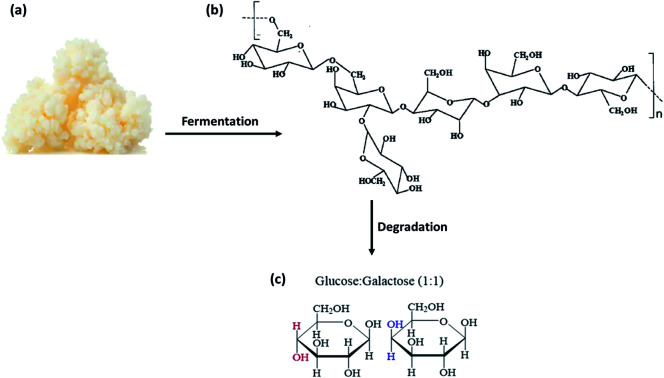- Record: found
- Abstract: found
- Article: found
Prospects of kefiran as a food-derived biopolymer for agri-food and biomedical applications

Read this article at
Abstract
There is a huge demand for food-derived polysaccharides in the field of materials research due to the increasing concerns posed by synthetic biopolymers. The scientific community is extensively searching for other natural, food-derived or bio-inspired polymers that possess promising potentials and advantageous properties that can be promptly utilized for multifarious applications. Kefiran, a food-derived microbial exopolysaccharide extracted from kefir grains has exhibited evidence of non-toxicity, anti-microbial activity, nutritional value, and other favourable characteristics. This review aims to shed light on the properties of kefiran and provide an overview of its applications in the agri-food and biomedical sectors. The present work also discusses the challenges and prospects that lie ahead for kefiran in finding its place amongst the existing spectrum of natural and biodegradable polymers.
Abstract
There is a huge demand for food-derived polysaccharides in the field of materials research due to the increasing concerns posed by synthetic biopolymers.

Related collections
Most cited references117

- Record: found
- Abstract: found
- Article: found
Nanotechnology in Sustainable Agriculture: Recent Developments, Challenges, and Perspectives
- Record: found
- Abstract: not found
- Article: not found